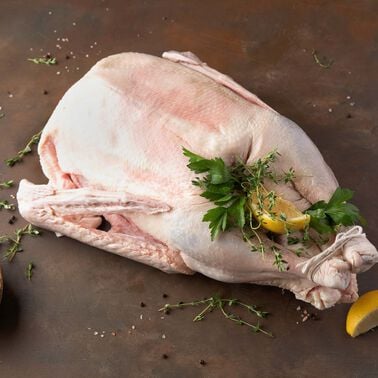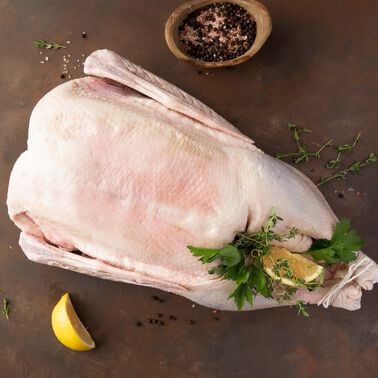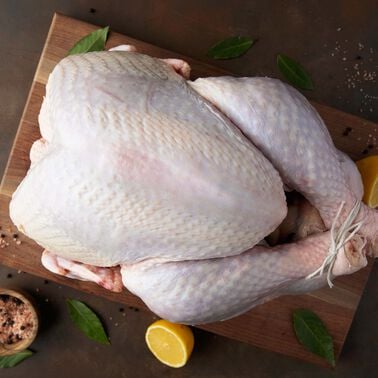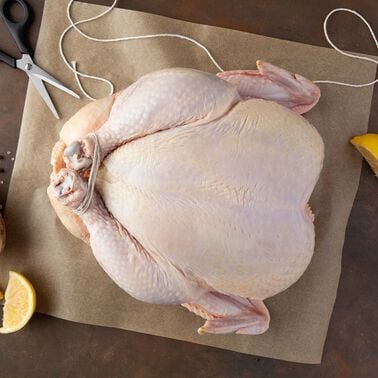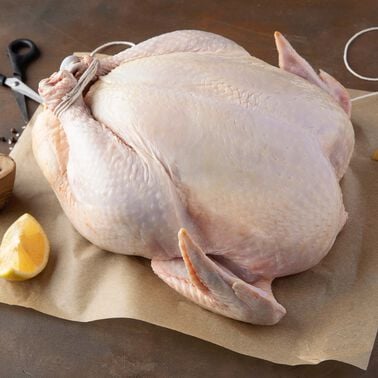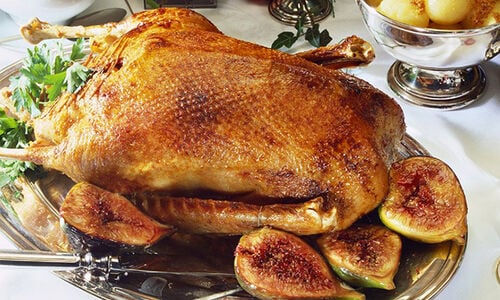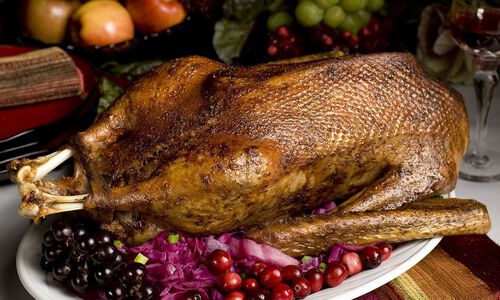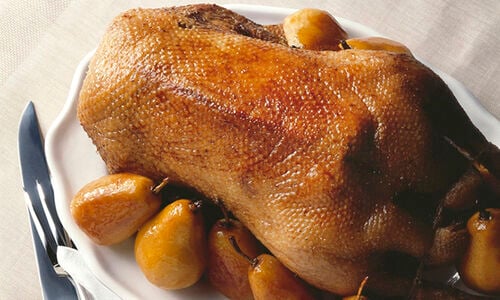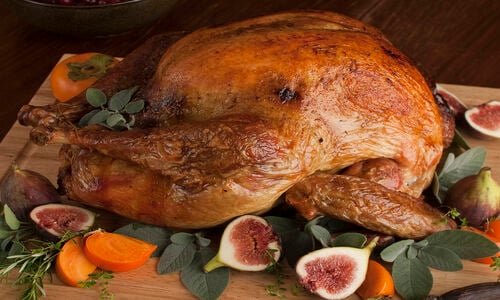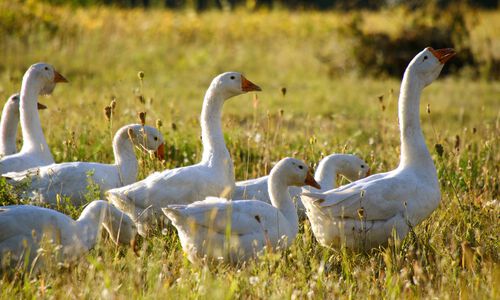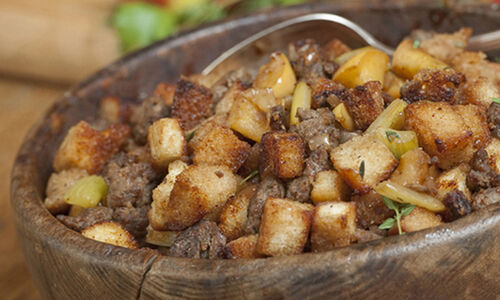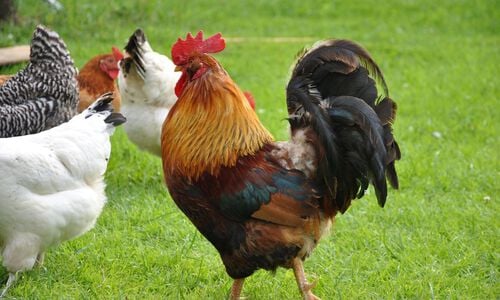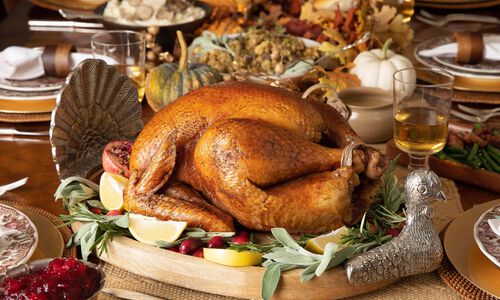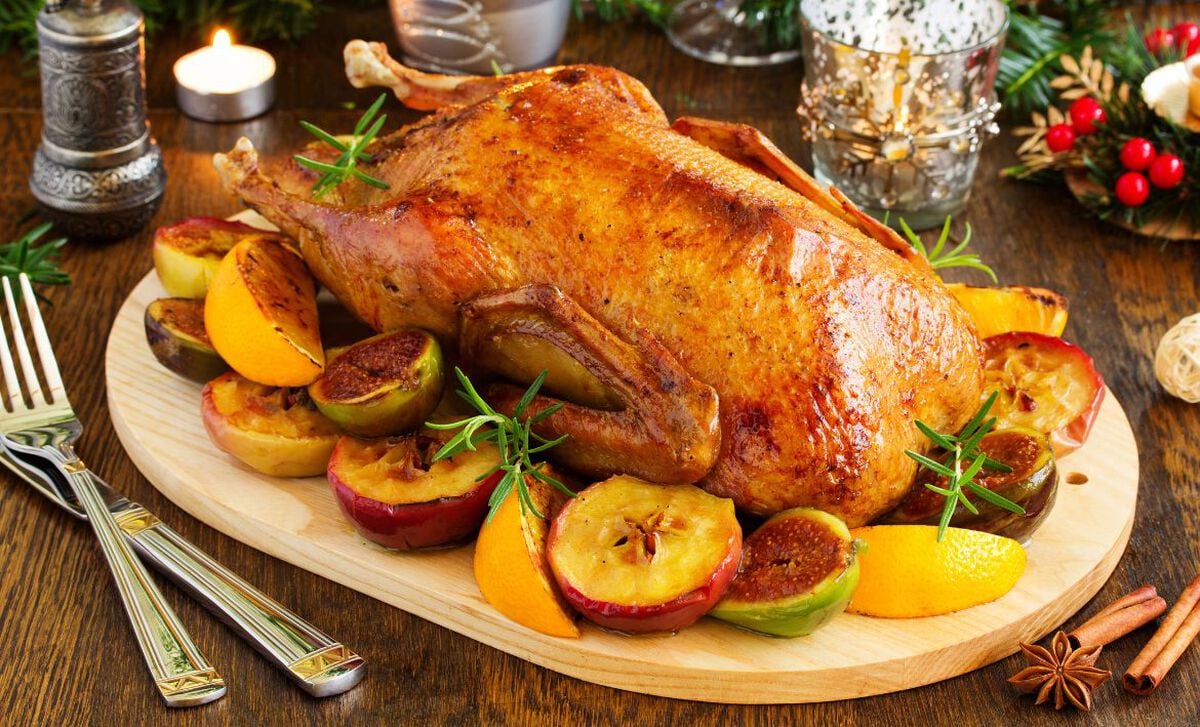
Why the Goose Is a Holiday Bird
One of the reasons that the goose became the ubiquitous holiday bird across Europe is that the natural rhythm of a goose’s lifespan fell in step with the autumnal and winter holidays. The so-called harvest, or stubble, goose came into season in mid-November and then ate a diet of barley and wheat to fatten up for the coming celebrations. The bird eventually picked up these monikers because after harvest, farmers would turn them loose into the fields of stubble left from the reaper’s work, to pick for scattered grain.
The Goose Tradition Continues
Fast-forward to present day and you’ll find our White Embdem geese are farm raised in similar style by small-scale farms. Remaining true to Old World traditions, they are barn-raised in small flocks until they are six weeks old. From then on, the birds range free in natural pastures with access to plenty of fresh spring water, natural light and country air, feeding on a diet of corn and soy meal fortified with vitamins and minerals. The birds yield superbly textured and distinctively flavored meat, so it’s no wonder our geese are widely held as the best Christmas goose.
Bird of a Different Feather
Unlike that other holiday bird, geese are naturally migratory; evolving with thicker skin and inbuilt systems for reserving energy in the form of fat stored beneath the skin and in the liver to sustain them in their high altitude travel. This very same nature also affects the texture of the bird’s lean, all-dark meat, making it firmer with a more a resilient tooth than turkey. Given these differences between the two birds, it is only logical that they should call for different methods of cooking as well.
Cooking a Goose
To begin with, there is no need to protect the bird with borrowed duck fat or barding. In fact, you will actually render excess fat during roasting, first lightly piercing the skin with a trussing needle or other sharp, pointy tool. Even though you are actively rendering fat during the roasting, you still baste the bird with its own accumulated drippings, accomplishing two things in the process. One, the hot drippings help to melt out more and more of the stored fat, and two, it will crisp the skin at the same time.
While cooking, you may actually have to use a baster to draw off excess fat from more shallow roasting pans. Be sure to save every precious drop when you do, because this is the crème de la crème of fats, and utterly amazing both for cooking and eating. In Gascony, this healthful pale, yellow fat is prized and used in much the same way as superior olive oil in Provence or butter in Normandy.
A goose also requires different but simple prep and trussing; and carving is a bit different because geese have narrower bodies and stronger leg and wing ligaments. In addition to straight roasting, other methods use boiling or steam to first render the fat, and in France, these fine birds are also slow poached to perfection. Use these links to our other holiday articles on how to prep and truss a goose, as well as how to use a simple combination method to prepare your goose that combines steaming and braising.
